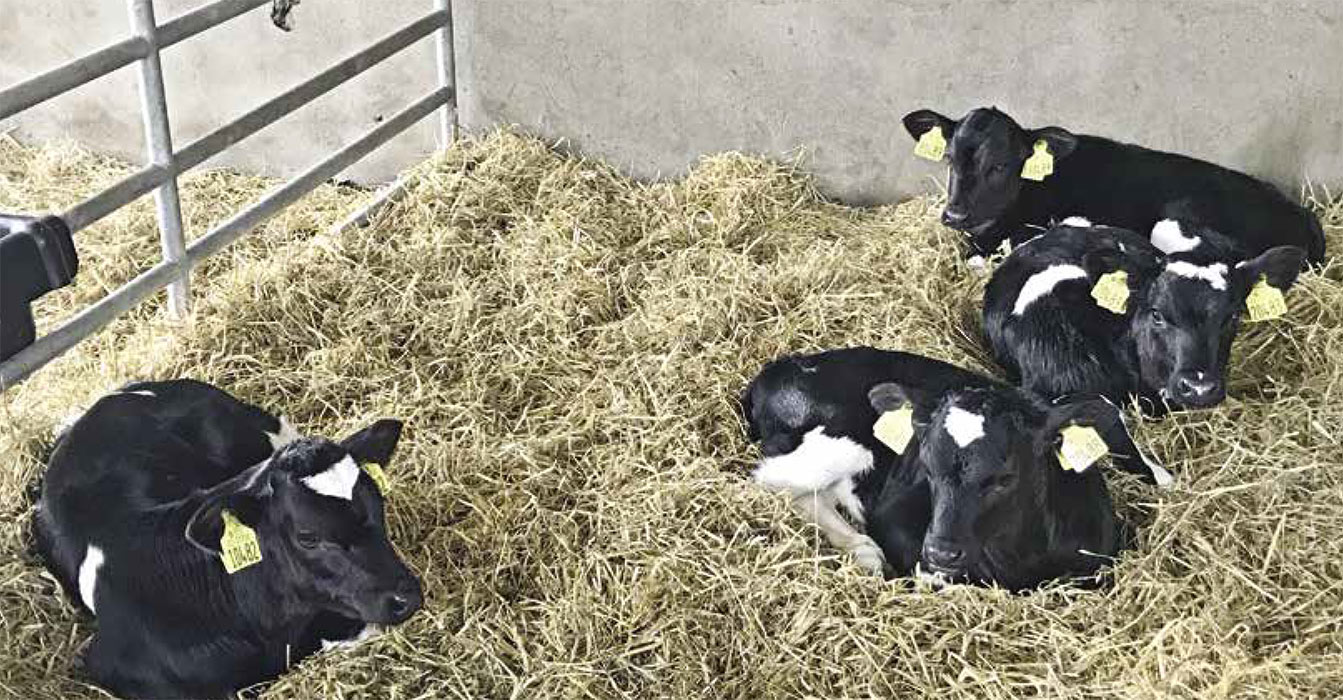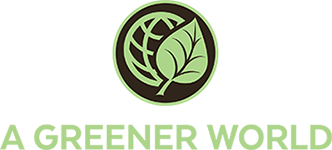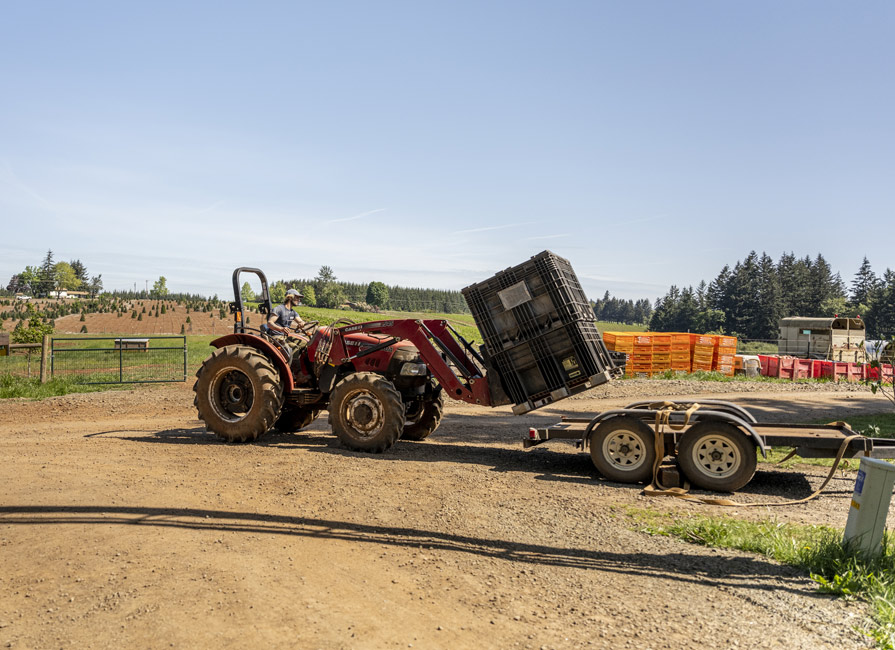One of the key attractions of our Certified Regenerative by AGW program is its practical…

Housing Benefits
The basic principles of youngstock housing are no different to those that apply to adult cows. Regardless of the age group or the type of housing, accommodation must provide for the animal’s needs in terms of shelter and comfort. Housing not only covers things like floor type and area, but also light intensity and air space.
Ireland example
In the typical Irish dairy herd, calving is a very seasonal event with the vast majority of calves born during February and March. However, you will rarely find calf hutches on Irish farms. While they can provide a good alternative to buildings (with improved air quality, for example), adverse weather conditions and poor drainage can quickly cause bedding to become wet, leading to potential disease and welfare issues.
Instead, Irish dairy calves tend to be paired- up and grouped as early as possible in indoor calf housing systems. Calves are provided with colostrum shortly after birth and moved to individual calf pens where their general health and appetite can be easily monitored throughout the day. This short-term individual housing, followed by grouping of calves, is a practical way for the farmer to monitor the calves’ health and growth progress, and offers many wider benefits.
Group benefits
Individual pens provide a safe and clean environment for the calf to recover from birth. Within the next two weeks—and once the farmer is satisfied the calf is healthy and consuming adequate amounts of milk—the individual calves will be combined into groups of 10-15 calves of a similar age until weaning. Once weaned, several groups are then combined to form one or two larger groups of youngstock, before turning out to pasture until weather conditions prompt housing again in winter.
The benefits in calf welfare and performance go hand-in-hand with this management practice. By housing in pairs or small groups soon after birth, it is possible to increase solid feed intake and weight gains. Group housing also encourages the natural social and inquisitive behavior of calves, increasing their learning ability and allowing them to adapt better to new environments.
Effective ventilation
Pneumonia is a major concern in young cattle, especially during the housing period, and can often be prevented through improved building design (with good ventilation and drainage to reduce moisture levels) and by avoiding over-crowding and mixed-age groups. It is essential to provide calves with a clean, dry bed in well ventilated but draft-free conditions. Air flow should not exceed around 4mph. Drafts should be avoided, and suitable shelter made available to calves if excessive air speeds are present at calf level.
In the mild Irish climate, temperatures rarely drop significantly below freezing for prolonged periods of time. However, temperature fluctuations are an important consideration for calf health and comfort. Under draft-free conditions, temperatures should not get lower than 44°F for new-born calves, although month-old calves can cope with temperatures around freezing for short periods.
The effectiveness of natural ventilation of a building depends on many factors, including:
- Overall span of the building
- Wind obstruction by other buildings or structures
- Pitch of the roof
- Stocking density and body mass of animals housed in the building
- The type of bedding used
Mechanical ventilation may be necessary to achieve adequate air movement to reduce moisture build-up and potential heat stress. Bacteria and viruses cannot survive for prolonged times outside the animal; removing stale, damp air will ensure disease is less likely to be transmitted between animals without direct contact.
Automatic feeders
The grouping of calves has the added benefit of allowing the use of labor-saving automatic calf feeders. In recent years, many farms in Ireland have moved to automatic calf feeders in group pens. After an initial training phase for the calves, all calves in the group receive their daily allocated milk volume spread out over several feeds. Often these feeders also incorporate a weighing scale which makes monitoring calf daily-weight gain hassle free.
The placement of automatic calf feeders within the calf pen is essential. The area around the feeder can quickly become contaminated with high levels of urine, as well as waste water from regular maintenance and cleaning cycles. Feeders should therefore be placed away from the bedded area on a well-drained concrete floor. A 1-in-20 slope of the floor towards a drainage channel in front of the calf pen will ensure the bedding remains drier for longer, reducing overall moisture levels inside the calf house and the frequency of refreshing the bedding.
Bedding choice
Newborn calves spend 80% of their time lying down. Therefore, the bedding material itself is of great importance. Straw is the obvious choice for many Irish dairy farmers despite its increasing cost. Straw provides good moisture absorbency and heat insulation and can be easily removed when soiled and replaced. However, wood shavings perform similarly to straw, with the added benefit of reduced risk of soiled bedding being ingested as forage by the calf. An easy way to check the moisture level of bedding is performing the ‘knee test’. If kneeling down in the calves’ bedding leaves wet stains on your knees, the bedding is not dry enough for calves.
During the springtime, few Irish dairy farmers find the time to fully clean and disinfect the calf housing. Group housing is an easy way of implementing an all-in-all-out system, where all the calves in a group will vacate a pen together when weaned and turned out to pasture. Before a new group of calves is introduced to the pen, all bedding material is removed and the environment, including the feeding and drinking equipment, thoroughly cleaned. During the summer, when all the calves have been weaned and are grazing, all the organic matter is removed from the calf housing and the building is disinfected and left unused to dry out completely, ready for next spring.

DO
- Group calves by age and size
- Keep calves in stable groups for higher daily live-weight gain and reduced prevalence of diarrhea and pneumonia
- Group (ideally) 4–6 calves per pen for the first week
- Subsequently, keep calves in groups of 10–15 from two weeks of age
- Practice all-in-all-out systems
- Run a separate group of calves that were isolated for health reasons until they are ready to be weaned and turned out with the rest of the calves
DON’T
- Mix younger calves with older calves
- Overcrowd the calf pen
- Allow more than 30 calves to share the same airspace
- Allow calves to share air space with older cattle
- Mix animals from different pens
- Return isolated calves to their original group
Joris Somers MVM DVMS is Animal Health and Hygiene Manager at Glanbia, Ireland


